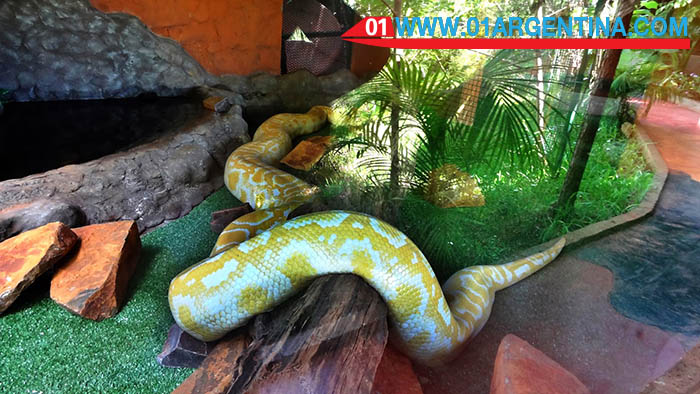
History, traditions, walks, typical dishes and an excursion on board suggest an entertaining circuit that completes the unforgettable visit to the Falls.
The Aripuca
The restless Otto Waidelich, a member of the German immigrant colony of Andresito – a town near Iguazu surrounded by seven natural reserves – had no better idea than to recreate the wooden trap used by the native Guaraní settlers to hunt birds on a giant scale. For this, he used thirty trunks lying in the jungle, 200 to 500 years old. In total, the work of 17 meters in diameter by 30 meters in diameter is supported by 500 tons of thirty of the two hundred varieties of wood counted in the jungle of Misiones.
The tour of the park that surrounds the main attraction is guided by Cunumí Reró Candiyú, “Little brilliance of the sun”, renamed Fabiano Fernandez in his document, that lives in one of the six Mbyá Guarani villages of the area. Cunumí is a champion of bow and arrow competitions, disciple of his hunter grandfather, who also used aripucas to search for food. In the hall of typical wood handicrafts, such as bows of guatambú with two arrows, bamboo cane or güembé fiber blowers, baskets, mates, replicas of yaguareté and toucan, yerba mate and rosella ice cream and even edible candy of wood Yacaratiá.
Güirá Oga
A tractor drags a wagon, which carries visitors to the shelters for injured or diseased wildlife rescued by the Güirá Oga Recovery and Recovery Center. In spite of the meaning of the name of the place (“The House of the Birds”), in this farm of almost 20 hectares intensely perfumed by nature, in which the children are dazzled by the flights of more than fifty varieties of butterflies, There is much more than birds.
Before being reintroduced into their natural habitat, they are living a healing and recovery period here. There are intimidating birds of prey (such as hawks and eagles), toucans, mountain turkeys, parrots, monkeys fell and carayá, bears meleros and many more birds than one can imagine. The thick vegetation cover of forty species of trees protects the facilities, which many animals arrive very deteriorated, as a result of accidents that suffer in busy routes, mistreatment or carelessness by people who appropriate them and confine them or were confiscated From the hands of traffickers. The protected landscape was the most suitable place naturalists Jorge Anfuso and Silvia Elsegood found to begin their delicate mission in 1997.
The Hummingbird Garden
A few steps from the center of Puerto Iguazu, Marilene “Mary” Moschen offers a walk in the most familiar area possible: the garden of your own house, where the cloying fragrance of 150 species of plants attracts at any time more than 50 birds of Seven varieties of añumby (hummingbird). In winter, many more birds that are characteristic of the Atlantic forest (covering Misiones and part of Paraguay and Brazil) are approaching, and the number and the loud noise are quadrupled.
The ideal moment to enjoy this magnificent show of treble trills and flush flights is between 4 and 6 in the afternoon, when the birds flock massively to peck bromeliads, Chinese roses and lanterns. Leandro Castillo, the owner’s son, is not surprised by the interest shared by expert ornithologists with babies and children. Her mother brought the idea of her original land (the rural area of Sao Miguel do Oeste, in the state of Santa Catarina, Brazil), where a multitude of birds perched on her native plants and bonsai and she fed them with sugar nectar .











